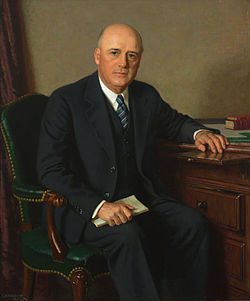| 87th United States Congress | |
|---|---|
86th ← → 88th | |
 United States Capitol (1962) | |
January 3, 1961 – January 3, 1963 | |
| Members | 100 senators 437 representatives |
| Senate majority | Democratic |
| Senate President | Richard Nixon (R) [a] (until January 20, 1961) Lyndon B. Johnson (D) (from January 20, 1961) |
| House majority | Democratic |
| House Speaker | Sam Rayburn (D) John W. McCormack (D) |
| Sessions | |
| 1st: January 3, 1961 – September 27, 1961 2nd: January 10, 1962 – October 13, 1962 | |
The 87th United States Congress was a meeting of the legislative branch of the United States federal government, composed of the United States Senate and the United States House of Representatives. It met in Washington, D.C. from January 3, 1961, to January 3, 1963, during the final weeks of Dwight D. Eisenhower's presidency and the first two years of John F. Kennedy's presidency. The apportionment of seats in the House of Representatives was based on the 1950 United States census, along with two seats temporarily added in 1959 (one member each from recently admitted states of Alaska and Hawaii).
Contents
- Major events
- Major legislation
- Constitutional amendments
- Party summary
- Senate
- House of Representatives
- Leadership
- Senate 2
- House of Representatives 2
- Caucuses
- Members
- Senate 3
- House of Representatives 3
- Changes in membership
- Senate 4
- House of Representatives 4
- Committees
- Senate 5
- House of Representatives 5
- Joint committees
- Employees
- Legislative branch agency directors
- Senate 6
- House of Representatives 6
- See also
- Notes
- References
- External links
Both chambers had a Democratic majority (albeit reduced in the House). With President Kennedy being sworn in on January 20, 1961, this gave the Democrats an overall federal government trifecta for the first time since the 82nd Congress in 1952.








